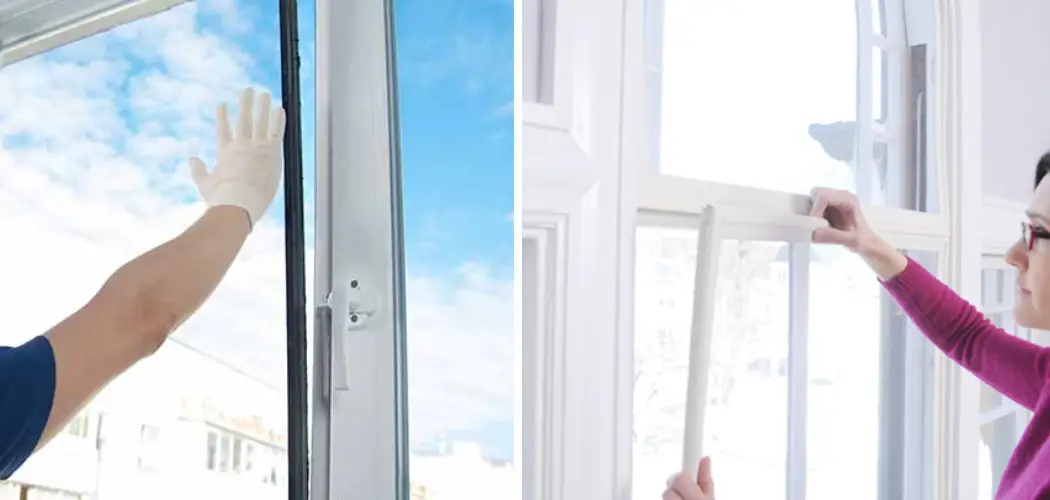Making a few small changes to your home can make a huge difference in saving energy and the environment. Did you know that new windows may not be necessary for making your space more energy efficient?
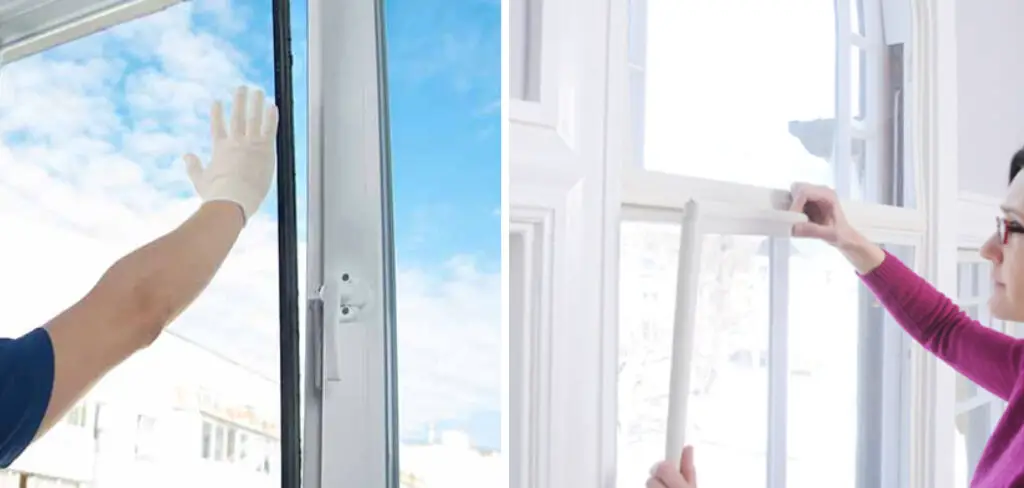
There are ways to improve the existing windows of your home, without replacing them. In this blog post, we’ll discuss how to make windows more energy efficient without replacing them by taking simple steps such as caulking and weather stripping – so don’t replace those old single-paned or double-paned windows just yet!
Importance of Energy-Efficient Windows for Reducing Energy Consumption
Windows are one of the main sources of energy loss in a home or building. Therefore, installing energy-efficient windows can make a big difference in reducing energy bills and making a space more comfortable to live in.
Windows are responsible for up to 25% of the total heat loss in a typical home, meaning that even small improvements can have considerable impacts. Energy-efficient windows are designed to reduce heat loss by reflecting more of the sun’s energy and keeping it inside the home, leading to improved comfort levels as well as a decrease in energy bills.
Energy-efficient windows also help keep out unwanted outside noise and sunlight, allowing for better control over the amount of light that comes into a space. These features can improve both sleep quality and productivity throughout the day.
In addition, energy-efficient windows generally require less heating or cooling power from air conditioners and furnaces, resulting in fewer greenhouse gas emissions and a cleaner environment overall.
Finally, replacing your old standard windows with highly efficient ones can boost your property value since this feature is becoming increasingly sought after in properties. Many buyers are looking for homes with this feature due to its many benefits and the potential savings on energy bills that come along with it.
Exploring Alternative Methods to Improve Window Efficiency Without Replacing Them
There are several ways to make windows more energy efficient without replacing them. One of the most cost-effective and easy methods is weatherstripping. Weatherstripping seals the gap between the window sash and frame to prevent air leakage. It is easy to install and can be very effective at preventing air leaks. Another method of improving window energy efficiency without replacing them is caulking.
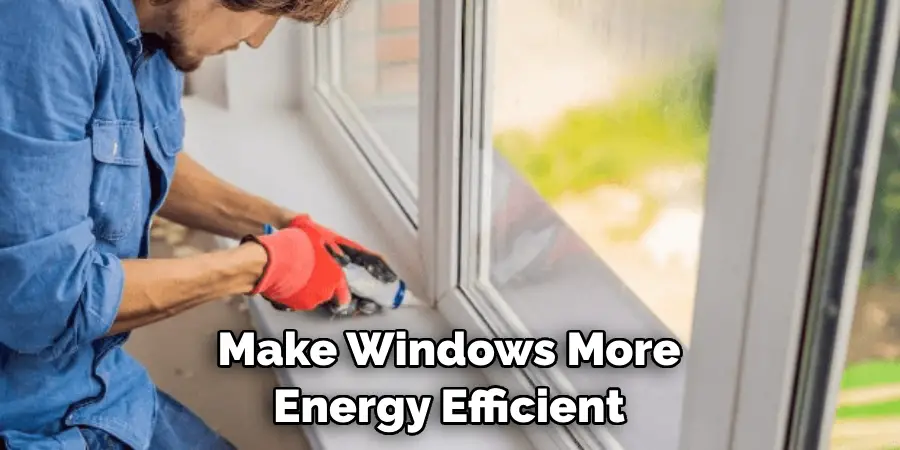
Caulking can also stop air leakage by sealing cracks around windows where weatherstripping cannot reach. Additionally, applying a special film to the window glass can also improve energy efficiency without needing to replace it.
This film blocks out ultraviolet light, which can cause heat transfer through glass, making it an effective way to reduce heat loss in winter months and block out excessive sunlight during summer months. Finally, installing exterior shutters or sun shades on outdoor windows helps keep direct sunlight from entering your house and keeps your home cooler during hot summer days.
Overall, while replacing windows is generally the best way to improve energy efficiency, there are several alternative methods that can help boost window performance without needing to make a costly replacement. By applying weatherstripping, caulking, film, and shutters to existing windows, you can reduce air leakage and block out excessive sunlight, helping your windows become more energy efficient.
10 Methods How to Make Windows More Energy Efficient Without Replacing Them
1. Weatherstripping:
Weatherstripping is a cost-effective method to seal gaps and cracks around windows. Use adhesive-backed weatherstripping tape or strips to seal gaps between the window sash and frame.
Additionally, apply weatherstripping to the bottom of the window to prevent drafts. Ensure a tight seal to minimize air leakage and heat transfer. While the weatherstripping material will need to be periodically replaced, it is relatively affordable and easy to install.
2. Caulking:
Caulking is an effective way to seal gaps and cracks in window frames and sashes. Use a high-quality silicone or acrylic-based caulk to fill any visible gaps. Pay attention to areas where the window meets the wall or where multiple window panes join. Proper caulking creates an airtight seal and improves energy efficiency.

Don’t forget to caulk around the inside of the window sill, too! However, you may need a professional to properly caulk around windows with complex shapes. Although it takes some effort to maintain, caulking can help increase the energy savings of your windows.
3. Window Film:
Window film can enhance the energy efficiency of windows by reducing heat transfer and UV rays. Choose low-emissivity window film, which reflects heat back into the room during winter and blocks heat from entering during summer.
Install the film according to the manufacturer’s instructions, ensuring a smooth and tight application. Window film can be purchased in a variety of sizes and colors. Be sure to measure the windows carefully before purchasing to get the right size.
4. Insulated Window Coverings:
Insulated window coverings, such as cellular shades or thermal curtains, provide an additional layer of insulation. These coverings have pockets or layers that trap air and create a barrier against heat loss or gain.
Close them during cold weather to retain heat and open them during sunny periods to allow natural light to enter. These window coverings can be adjusted to control the amount of light and heat entering your home. They also help reduce glare, increase privacy, and enhance the décor of your home.
5. Window Treatments:
Consider installing window treatments, such as blinds or curtains, to further enhance energy efficiency. Close blinds or curtains at night to provide an extra layer of insulation and privacy.
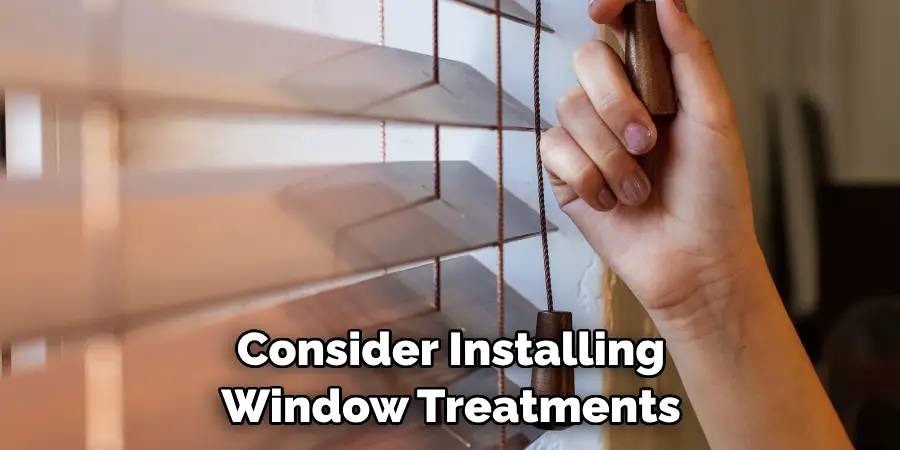
During the day, open them to allow natural light in, reducing the need for artificial lighting. If you have trouble finding the right window treatments for your home, consider consulting an interior designer or other professionals. They can help you select the best options for your windows and home design.
6. Draft Stoppers:
Use draft stoppers to seal gaps at the bottom of windows. These long fabric tubes or adhesive strips prevent drafts from entering the room. Place them along the window sill or attach them directly to the window frame. Draft stoppers are affordable and easy to install, significantly reducing heat loss through gaps.
7. Reflective Window Panels:
Reflective window panels or foils can improve energy efficiency by reflecting sunlight away from the windows. Attach these panels to the exterior of the window or use suction cups to secure them on the interior side. The reflective surface reduces solar heat gain, keeping the room cooler during hot weather.
Additionally, these panels block the sun’s UV rays, protecting home furnishings from fading. Make sure to purchase panels specifically designed for windows, as they are tinted to allow natural light into the room. Install them on both sides of the window, and they should last up to ten years.
8. Window Insulation Kits:
Window insulation kits provide an affordable and temporary solution for improving energy efficiency. These kits typically include a plastic film that you attach to the window frame using double-sided tape. Use a hairdryer to shrink the film, creating a tight and transparent barrier that helps reduce drafts and heat loss.
Make sure to inspect the film every few months to check for any tears or loose edges. Window insulation kits are a great option if you want an easy-to-install, temporary energy efficiency fix.
9. Window Quilts:
Window quilts are fabric coverings that insulate windows and provide an extra layer of warmth. They are particularly useful for older or single-pane windows. Install window quilts using a curtain rod or fasteners. Close them during cold weather to prevent heat loss, and open them during daylight hours to allow sunlight in.
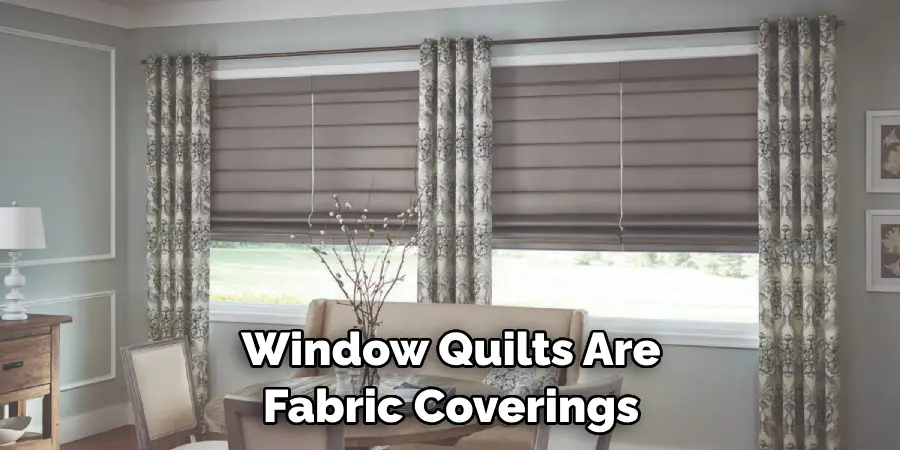
Window quilts work best in homes with good ventilation and no drafts. Make sure to clean the window quilt regularly to maintain peak efficiency. Although window quilts can be expensive, they are a great way to reduce your energy bill without replacing windows.
10. Exterior Shading:
Consider installing exterior shading options, such as awnings, exterior blinds, or shades. These shading devices block direct sunlight from entering the windows, reducing heat gain during the summer months.
Choose shading options that can be easily adjusted or retracted to allow sunlight in during colder seasons. While exterior shading can be costly, they provide improved energy efficiency and savings in the long run. Try to install them on the side of the house that faces the sun. This will provide maximum benefit from blocking direct sunlight.
Conclusion
All in all, making your windows more energy efficient without replacing them requires perseverance and dedication as changes may not be immediately visible. You need to invest time and money but it will pay off in the long run when you don’t have to worry about energy bills skyrocketing.
Replacing windows can significantly reduce the amount of heat that is lost through your windows, however it can be an expensive option which is why we provided you with several alternatives to make existing windows more energy efficient.
Depending on your budget and ability to perform a DIY project, there are options for everyone so pick one and start saving! Now that you know how to make windows more energy efficient without replacing them, you can start thinking about ways to save on energy costs. Get creative and save money at the same time—it’s a win-win solution!

